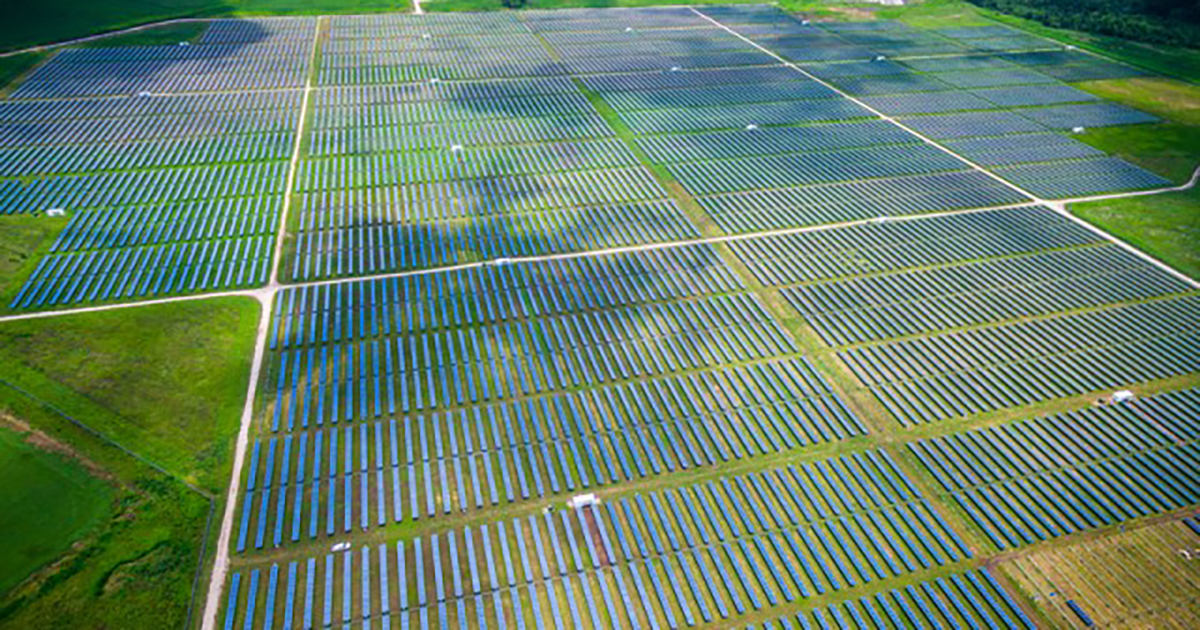Tapping into the power of the sun offers commercial and industrial facilities more control over their utility bills and the ability to operate in a more sustainable fashion. Plummeting prices and improved technology make a host of options available for companies that want to go solar. But they’re left with a lot of information to parse and deliberations to make.
We have created this three-part commercial and industrial solar series to shed light on the types of solar installations possible today, important technology considerations, and system financing and cost options available to companies of all sizes. See Part I: Everything Under the Sun here and Part II: Questions for Companies Considering Solar Power here.
Part 3
The Competitive Solar Imperative
In the first two parts of this blog series, we dove into the evolution of the solar industry, technology progress, and some important questions for companies to ask when considering solar power for their operations and facilities.
In our final entry in this series, we are going to discuss the competitive advantages of solar adoption along with the risks of not adapting to the rapidly changing energy landscape.
This is Really Happening
It is estimated that around the world solar companies are installing more than 70,000 solar panels every hour. Enough to cover 1,000 soccer fields every day. A truly mind-boggling statistic. There are a number of reasons that companies and homeowners choose solar — whether for sustainability, cost savings, or resilient local energy. But the end result is solar is coming, and if not already, it will be on rooftops and in parking lots and fields near you soon. Companies that embrace the shift to solar energy are capitalizing on a number of benefits:
Utility Bill Savings & Improved Cash Flow:
Utility bills are a significant expense for companies of all sizes. Whether owned or leased, the biggest advantage of going solar is the monthly savings that will be realized on a utility bill. If you own the system, those savings are all yours. When leased, the equipment is owned by a third-party and the energy is sold to your company at a steep discount on utility prices, saving money with no upfront costs. This means more money on hand and less leaving your coffers each month.
Rapid ROI:
If companies choose to own solar panels, the resulting energy generated is working to pay off the up-front cost of installation over five to seven years, followed by up to 20 years of free energy after that. That’s a solid investment, regardless of your underlying business model.
Corporate Social Responsibility:
Besides being the right thing to do in a climate-constrained economy, choosing renewable energy is shown to be an attractive driver for many consumers. All else being equal, a company powered by coal will do worse with consumers than one powered by the sun, and the added benefits of ‘going green’ can even outweigh the price differential between two products.
Predict the Future:
No, we don’t mean a crystal ball. But predicting future operating costs for a business can be difficult. By adopting smart energy solutions like solar panels, these future utility and energy costs can be much more controlled and predictable.
Invest in the Local Economy:
Solar may be a global industry, but the team that puts it on your roof is local. And increasing demand locally helps to create local jobs with good wages ($30-40+ an hour for new hires).
These are just some of the myriad benefits for companies that choose to adopt solar power. Companies that choose to forego these opportunities could quickly find themselves at a competitive disadvantage in the marketplace and customers flocking to more sustainable alternatives.
Your Utility Bill is Getting More Complicated
If these benefits aren’t reason enough, the future of energy and utility bills is getting increasingly complicated. Most companies do not set out to be in the energy business, but as utility rate structures and fees become increasingly complex, if companies do not adapt they can be left holding the proverbial bag.
Utilities are changing the rates that we pay each month in two significant ways — time-of-use rates and demand charges. There are lots of reasons for these changes, but put simply, being a passive consumer of energy is no longer a viable option.
Time-of-use rates for electricity mean that when energy is consumed now matters. During different parts of the day (typically first-thing in the morning, and then again in the 4-8 pm time frame) the rates you pay for electricity will be higher. Utilities do this to discourage consumption at times when the grid is constrained. These rates can apply to both businesses and residences. Measurement is done in kilowatt hours (energy), and based on volume of consumption at the given point in time.
Demand charges reflect how much electricity is used at a given time, typically during these same constrained periods. The basic idea being that if you have the potential to use a lot of energy at a given moment (say, an industrial process starting or a large piece of equipment ramping up) the utility has to ensure that it always has that potential spike in demand available. Utilities will measure your consumption over a short period (typically 15 minutes), and companies will receive a ‘demand charge’ based on their peak demand, measured in kilowatts (power). Limiting consumption during these brief measurement periods has a significant impact. Commercial and industrial customers subject to demand charges may find that they make up the lion’s share of their monthly utility bill.
In both these cases, solar power — and especially solar power paired with batteries or other advanced energy systems — can be a buffer against these higher prices. By lowering overall demand (energy) you are not subjecting your company to costly time-of-use rates. By lowering (or shifting) your peak consumption spikes during certain times of day, you can avoid pricey demand charges.
Ignore Solar Power at Your Own Peril
The solar revolution is upon us, and companies around the world are deploying solar panels at a frenzied pace. Companies that ignore this trend could be left with a measurable disadvantage in the marketplace, and would be well advised to consider the options available to them today and what impact future trends will have on their bottom line. You built your business with a core mission, and it is safe to assume that wasn’t to spend time and resources sorting through increasingly expensive and complicated utility bills. Working with experts in the space who understand the utility sector and the pressures commercial and industrial companies face in this regard can help you to solve your energy challenges — for the benefit of your bottom line and competitive future.





